Instructional Series
This site will be closing soon as its content has moved to Tāhūrangi.
2024 titles are available on Tāhūrangi. Use the filters to find specific series.
Find Literacy resources at Tāhūrangi - Literacy.
Welcome to the English medium literacy instructional series teaching and learning resources for years 1 to 8.
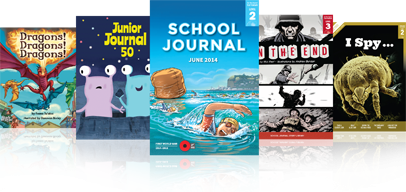
- Gold
- Purple
- Red
- Turquoise
- Green
- Yellow
- Blue
- Orange
- 2
- 3
- 4
- 1
- 4
- 6
- 5
- 7
- 3
- 8
- 1
- 2
- English
- Social Sciences
- Science
- Health and Physical Education
- Technology
- The Arts
- Mathematics and Statistics
- Learning Languages
- Non-fiction
- Fiction
- None
- Nature of science
- Living world
- Nature of technology
- Geometry and Measurement
- Number and Algebra
- Statistics
- Planet Earth and beyond
- Technological knowledge
- Technological practice
- Material world
- Physical world
- Engage with science
- Use evidence
- Critique evidence
- Gather and interpret data
- Interpret representations
- Articles
- Stories
- Poems
- Plays
- Comic
- Māhuri | Sapling
Search results
204 items - Showing 41 - 50
-
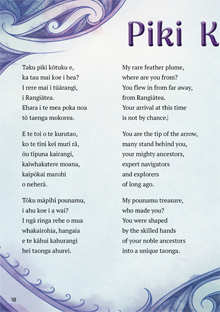
Piki Kōtuku
by Ariana Tikao
Taku piki kōtuku e, ka tau mai koe i hea? I rere mai i tūārangi, i Rangiātea. Ehara i te mea poka noa tō taenga mokorea.
My rare feather plume, where are you from? You flew in from far away, from Rangiātea. Your arrival at this time is not by chance.
-
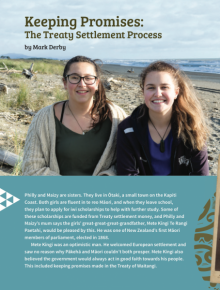
Keeping Promises: The Treaty Settlement Process
by Mark Derby
This article provides an accessible introduction to the Treaty settlement process. The content covers events from 1840, when the Treaty of Waitangi was signed, through to the present day. The material is organised in to sections with brief, clear headings. It also includes a pop-up interview section with quotes from six Māori from different iwi who comment on the Treaty settlement process and what it has meant for them.
-
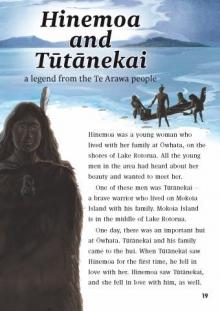
Hinemoa and Tūtānekai
A legend from the Te Arawa iwi
This text is a retelling of a legend of the Te Arawa people. It tells the love story of Hinemoa and Tūtānekai. Tūtānekai lives on Mokoia Island, separated from Hinemoa by the waters of Lake Rotorua. Hinemoa’s father does not want the two young people to be together and tries to stop them from meeting. But Hinemoa is determined and risks her life to swim across Lake Rotorua to be with Tūtānekai.
Gold 1
-
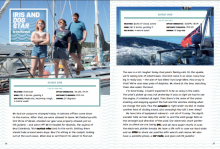
Iris and Dogstar
by Iris Marshall
This article is based on the diary of Iris Marshall, a ten-year-old girl who sailed on the yacht Dog Star with her parents and a family friend from New Zealand to Nouméa. The text details the highs and lows of the journey from Iris’s perspective and includes some excerpts from the on-board logbook. While few students will have had the experience of sailing, many will have experienced sea sickness, and most will relate to and be interested in the day-to-day details of life at sea. The text could be used as a starting point to explore the nature of adventure, its perils, and its rewards.
-
Stop/Go
“This item has been removed from the catalogue. A review found that the issue contains a story that perpetuates racial stereotypes. We regret any offence which may have been caused.”
-

Muse
by Paul Mason, illustrations by Mat Tait
This is the third instalment in this series, which is set in a dystopian future. Although it follows on from “Hushed” and “Wind Chimes”, the story can stand alone.
-
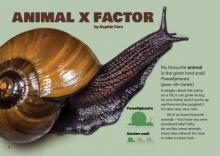
Animal X Factor
The article explores familiar questions – why do we like some animals more than others, and does it matter? – but encourages the reader to look at it from a more critical, scientific perspective.
-

Dinner for Greedy Cat
by Joy Cowley
illustrated by Robyn Belton
Delicious smells are wafting over the fence from the barbecue next door, and Greedy Cat just can’t resist …
Turquoise 1
-
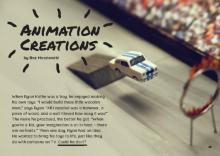
Animation Creations
Ryan Kothe, an animator from Auckland, uses stop-motion animation to make short videos and advertisements. In this article, he explains how to create your own stop-motion animation movie.
-
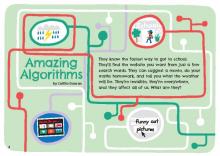
Amazing Algorithms
This article introduces and explains the concept of algorithms in a simple and engaging way. It supports understanding of this abstract concept by providing concrete examples from everyday life, mathematics, and computer programming.





 Literacy Online home
Literacy Online home
